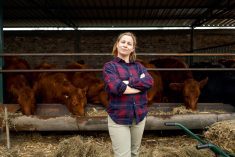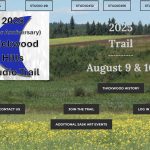If there has ever been a time of information overload, today would qualify. As we try to navigate through today’s challenges, an emphasis on or improvement in decision-making can be a good addition to the management tool box.
Holistic management is often described as a decision-making framework. After setting a shared goal/vision, these seven testing questions can help guide us to a better decision.
Root cause: Are you treating the actual cause or just a symptom?
Weak link: In three possible applications, focus on strengthening the weakest link in the chain. In the production chain, we consider the links of resource conversion (growing), product conversion (harvesting) and marketing. Then, expenses to strengthen the weakest link can be determined and allocated. The social weak link considers potential impacts of our decisions on those around us. The biological testing questions are applied when dealing with undesirable species.
Read Also

Canadians still value sustainably produced beef
Report on Canada’s Beef demand-building activitis in Canada, as well as in Vietnam, Korea and Japan.
Gross profit: A financial analysis to compare enterprises and determine which is the greatest contributor to existing overheads.
Comparing options: Which action will give you the greatest return for time and money invested?
Energy/wealth source and use: Where is the energy or money coming from and how is it being used?
Vision analysis: Is the action taking you toward your long-range shared vision?
Gut check: How do you “feel” about the decision?
Needless to say, these questions won’t always be answered in the same way. Each operation and situation is unique. There is not necessarily one right answer, but by going through the process of asking the questions you can make a better decision for our team and operation.
Another approach is to use a decision tree, which allows you to visualize different courses of action and potential outcomes. The decision tree has three different elements. The root represents the decision one is trying to make. The branches, stemming from the root, represent the different options. The leaves then represent the possible outcomes. This approach is intended to take the emotion out of the possibilities. It can also encourage creativity by allowing you to come up with additional options from what was first considered. The internet has many templates and examples.
A four-quadrant matrix that is modelled is yet another tool. According to the Farnam Street blog, the four quadrants are:
1. Irreversible and inconsequential
2. Irreversible and consequential
3. Reversible and inconsequential
4. Reversible and consequential
You need to clarify the meanings or parameters of reversible and inconsequential, but once those are determined, the matrix can be a simple and easy tool.
Reversible and consequential decisions are the perfect options to run experiments and gather information. Consequential and irreversible decisions are the ones to focus on.
Still another decision matrix with a mathematical approach takes into account the important factors, ranks them and scores the various options. The example I first learned about was when a couple was planning on relocating and had four options in mind.
First, identify the important considerations and rank their levels of importance. Identify alternatives and rank how they satisfy the different considerations.
Referring to the relocation example, and the four possible locations to move to, the considerations were airport access, cultural opportunities, cost of living and size (they were hoping for a small to mid-sized city). The cost of living was the most important and ranked as an eight, the airport was a seven (for business travel) cultural opportunities were a six and size a five. The options were scored in each of those areas and that score was multiplied by the importance rating. These were totalled for each location to help come up with the highest ranking.
In the book, Strategic Doing: Ten Skills for Agile Leadership, authors Edward Morrison, Scott Hutcheson, Elizabeth Nilsen, Janyce Fadden and Nancy Franklin talk about finding the “Big Easy,” once you have come up with a few opportunities. One of the tactics they emphasize is switching from vertical thinking to horizontal, particularly when coming up with new ways of looking at the assets and creating opportunities.
They use what is called the 2×2 process, focusing on relative impact and ease of implementation. A four-section quadrant is again used with the horizontal axis being difficult to easy and the vertical being low impact to high impact. The two or three opportunities are then ranked on impact and ease of implementation by individuals and plotted on the quadrants or scored and totalled. The higher scores are ultimately those that are the easiest to implement and with the highest impact. It is important that people are excited by the chosen opportunity and also that the outcome has measurable characteristics.
In the cattle industry, we are currently being faced with so many challenges. Those who came before us would likely say this is nothing new. Drought or anticipated moisture, access to stored feed to make it to the growing season, access to pasture, market volatility, input costs and deciding who is going to take over these operations are all on the list.
None of the examples is likely to solve all the challenges with decision-making but the process of asking more questions, looking at importance, consequences and ease of implementation and sharing thoughts and opinions with team members can hopefully enhance the process. At the same time, remember that sometimes we need to land the plane and get on with it. As they say, plan for the worst and hope for the best.















